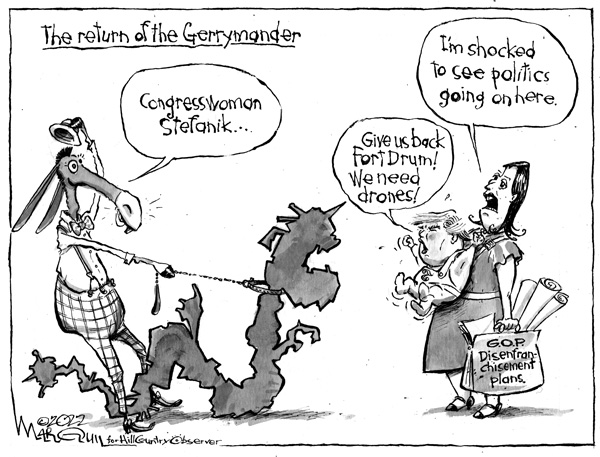Editorial February-March 2022
E D I T O R I A L
To save democracy, curb the gerrymander
It’s a dispiriting time for those who dream of revitalizing New York’s sclerotic democracy.
In November, voters rejected a pair of no-brainer ballot propositions that would have made it easier to take part in future elections – by allowing no-excuse absentee voting and by letting new voters register closer to Election Day.
The defeat of these proposals likely means New York will continue to lag well behind most other states in voter participation. (In contrast, Vermont, which allows voting by mail and same-day voter registration, usually ranks near the top.)
Over the past few months, New Yorkers also have borne witness to the spectacular failure of the state’s new Independent Redistricting Commission. The commission’s supposed purpose was to take the politics out of the once-a-decade task of redrawing congressional and legislative district maps; instead, it deadlocked amid a whirlwind of partisan bickering.
With the independent commission safely out of the way, the Legislature got busy in January doing things the old-fashioned way, with the help of a staff that has long experience in the dark art of gerrymandering.
What’s different this year is that, for the first time in at least the past five decades, Democrats, by virtue of their lopsided majorities in both the Assembly and state Senate, are firmly in control of the map-making process – and are apparently willing to gerrymander to maximum advantage.
As this issue heads to press on Feb. 2, the Legislature has just voted to adopt a new map of congressional districts that likely would leave Republicans in control of just four of the state’s 26 U.S. House seats, compared with eight out of 27 seats currently. (In typical Albany fashion, the new map became public only three days before the vote.)
State Republican leaders have vowed to challenge the map in court. But the party has used gerrymandering to similar effect in states such as Texas and Florida where the GOP controls the governorship and both legislative chambers.
In North Carolina, for example, Republican lawmakers put forth a new congressional map that would give the party firm control over 10 of the state’s 14 U.S. House seats, even though the two major parties are often within a few percentage points of each other in statewide races.
New York’s new congressional map would likely give Democrats control of 85 percent of the state’s U.S. House seats, although the party’s voter enrollment advantage is only about 7-to-3.
In this new era of bare-knuckled politics, there are doubtless many Democratic voters in New York who are just fine with the party’s aggressive use of gerrymandering if it counters Republican advantages in other states.
But the real travesty of gerrymandering is that it’s so often used to protect incumbents by making it impossible for challengers to compete. Consider that of the 435 U.S. House seats, only a few dozen see competitive races in any given year.
In New York, only four or five of the state’s 27 House districts have had races that were decided by fewer than 10 percentage points in recent years. Under the state’s new map, the number of competitive House seats could be trimmed to two.
If we want to keep our democracy healthy, we need to remove barriers that discourage voters from participating. But what will be the point of participating if most of us no longer have meaningful choices on our ballots?


